Why Horror Games Are Scarier Than Movies
From the start of cinema, horror has been a constant, ever-present threat to an audience's peace of mind but recently, many people come to the conclusion that horror games are scarier than movies.
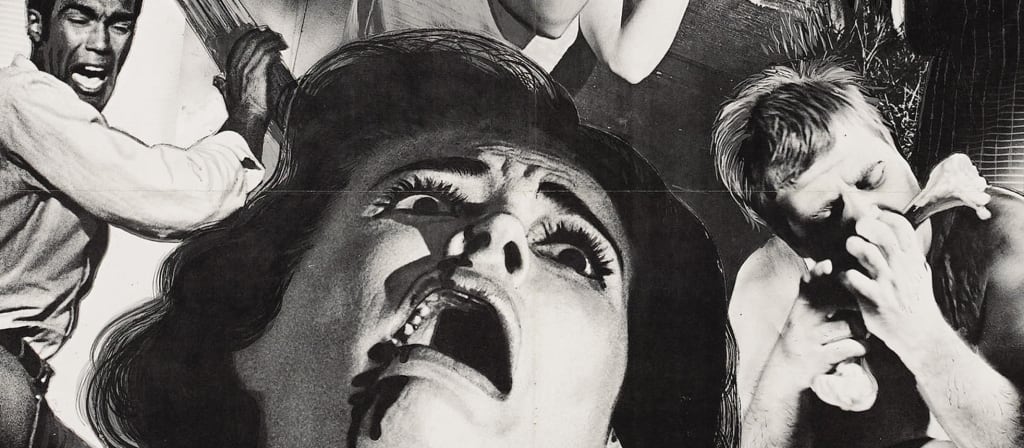
Many cinephiles will look at the most popular horror games of the time, like Slender: The Eight Pages or Five Nights at Freddy's, which are popular and accessible games, and scoff. Nothing about these games really seem that scary. What? Slenderman jumps out at you and the screen goes staticky? An animatronic jumps out at you? These are cheap chump scares.
And, yes, the quality of the scare will vary. But there is a reason why horror games are scarier than movies – a reason that has already lead to video games adventuring into new frontiers of terror.
The Audience that Dodges a Train
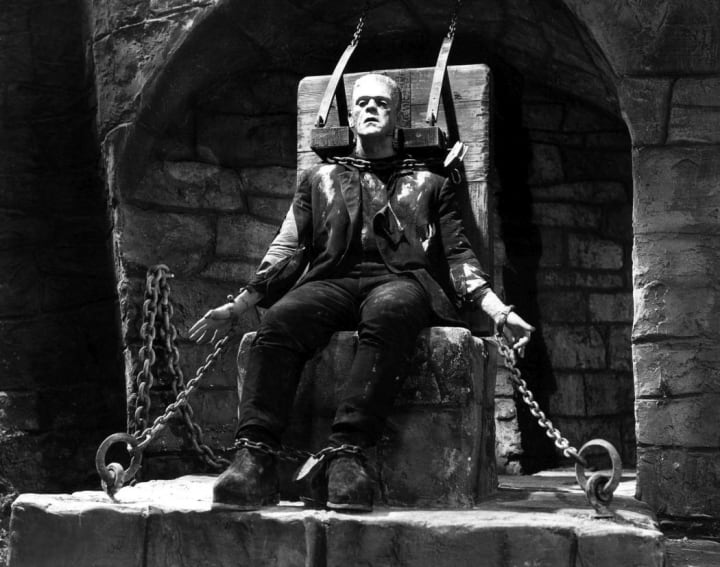
According to legend, in 1895, when "L'arrivée d'un train en gare de La Ciotat" was first shown to audiences, people scattered in horror as the train sped toward the screen. This fifty-second clip blurred the line between reality and fiction for them by showing them a moving picture of a vehicle speeding right toward the camera. If this is true, this was the first and last time an audience actually felt in mortal terror from a scary movie.
Throughout the years of cinema, scary movies have tried to push boundaries. The 1931 film Frankenstein presented a monster comprised of sewn-together flesh who, in a naive, almost innocent moment, drowns a young, screaming girl. 1932 saw Freaks, a film starring real circus performers who maim a beautiful woman in a grotesque fashion. Night of the Living Dead presented an apocalyptic scenario where the dead rise from their graves to devour the living. 1973's The Exorcist corrupted the innocence of youth by having a demon inhabit the body of an innocent girl. And 1984's A Nightmare on Elm Street showed us that we aren't even safe when we're asleep.
Each of these horror movies – and countless others – pushed the boundaries of horror. Yet none of them matched that same sense of unbridled terror audiences felt when they first saw that train coming at them from the screen.
The reason for this is simple: it isn't real. To quote the tagline from Last House on the Left, "It's only a movie. Only a movie. Only a movie."
Immersion
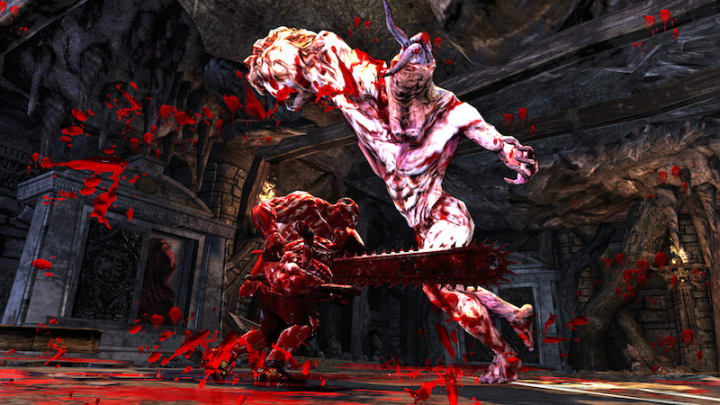
And this is where we start to understand why horror games are scarier than movies. Movies, by their nature, are observed. A video game is immersive. You enter the video game, take on the challenges of the game, and inhabit that world.
Now, for many reasons, this means that games, by nature, are geared toward challenges. From the beginning, games offered people a chance to live out their power fantasies. Go out into the world with a machine gun, and mow down your adversaries.
But somewhere along the way, developers saw something. Giving players power made the games fun, exciting, and energetic. But what would happen if the players had no power?
The start of the survival horror genre of video games may have been the Japan-only game Nostromo, released in 1981. It grew heavily from the horror movie Alien for inspiration, right down to the name. Like in Alien, the main character is a defenseless human trying to escape a labyrinthine space ship, pursued the whole while by an alien who could not be seen. The sense of dread builds as you search for the alien, all the while aware that you can do nothing to stop it, should it arrive for you, should it come to kill you.
Nostromo works for the same reasons Alien works, but no one is going to say a technologically outdated game like Nostromo could compare to the masterpiece that is Alien. But the core of survival horror from this point onward drew from similar sources. Powerless main character, powerful villain, and the need to escape.
While many games attempted this formula, many early horror games, like Splatterhouse or Castlevania, tried to be games first with scary imagery, resulting in the sort of horror you'd see on a metal album cover: grotesque, but cool. The main characters confronted scary enemies, but they went down as easily as a Koopa from Super Mario Bros. Hardly a scary video game enemy. You can't argue that these horror games are scarier than movies, nor will I.
It wasn't until the 90s that survival horror games really took off. While earlier games like Clock Tower and Alone in the Dark offered gamers a scary experience, most gamers agree that the archetypical survival horror game started with two Playstation games: Resident Evil and Silent Hill.
Both games put players in a scenario where the main characters are left with few (if any) weapons, and confronted against enemies that are at once powerful, hard to kill, and nightmarish.
Most video games before that offered plenty of ammo or weaponry. Or, at the very least, a consistent weapon. These two games didn't. Not only that, but you had limited resources, limited health, and limited room for equipment.
You were immersed. In a sense, you were no longer watching Ellen Ripley run through the Nostromo's corridors. You became her.
You were watching the train speed toward the camera, and you, like the audience in 1895, were ducking for cover.
Boo!
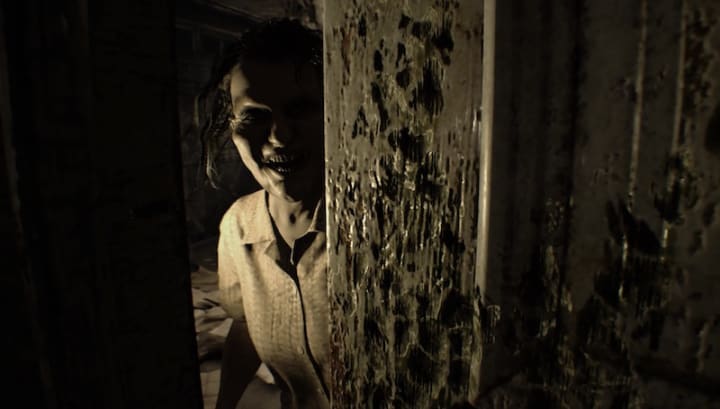
But immersion isn't enough. At the end of the day, players are not really in danger. Their game avatars are, but not their physical selves. Once the player becomes desensitized, are scary horror games really scary anymore?
Let's analyze that.
Horror exists on a sliding scale of sorts, at least withe the movies. There are, in essence, a few levels of terror. In order to understand why horror games are scarier than movies, though, we need to understand how each medium incorporates these levels of fear, and whether or not games do it better than the movies.
There's the jump scare, which is arguably the most abused form of horror, where something scary jumps out at you and startles you. You get a rush from it, but nothing really lasting (unless it's a truly good scare, like the hospital scene in The Exorcist III or the bar scene in Mulholland Drive).
But audiences are cynical about jump scares. We know when the scare is coming. There's a formula. By the time the jump scare comes, we've already prepared ourselves for the scary scene. It's why a lot of horror films with nothing but jump scares feel so boring.
Again, jump scares can be done well in film, but this is infrequent.
Horror games, however, use jump scares usually as a punishment for messing up. In popular scary game franchise, Five Nights at Freddy's, jump scares typically occur after the player messes up, and is confronted with death. Same in Slender and other indie games that draw inspiration from those two in order to startle the player.
Younger gamers are horrified by this, but a lot of more seasoned horror gamers find this as startling as a game over screen.
But one of the scariest moments in video game history is a jump scare. Perhaps the best executed jump scare in history because, unlike most horror movies, the jump scare is actually shocking.
In the original Resident Evil, your character (Chris Redfield or Jill Valentine, depending), is running through a house full of zombies. You have come to expect zombies roaming the halls. You know around every corner, your static camera will reveal new threats. You also know what to hear – a faint moan. So when you come across an empty room with windows along the wall, your experience playing the game informs you that, because there are no zombies and no moans, you're safe.
You walk into the room, take a sigh –
Boom! The window shatters inward, and a zombie dog comes charging at you, faster than anything else in the game thus far.
Not only are you unprepared for this, but the sudden shock of life-and-death forces you into action as you're still preparing for it.
And to make matters worse, if you take a few too many steps down the hall, a second dog bursts through another window, giving you two to deal with.
This scene triggers a genuine sense of fright or flight in the player, which may result in them wasting tons of ammo gunning down two zombie dogs (potentially missing as you struggle to orient yourself), and wasting plenty of life if they bite. You can run, but the dogs aren't going away, and you know they're there for you.
If you're not prepared, it's a terrifying experience.
Ewww
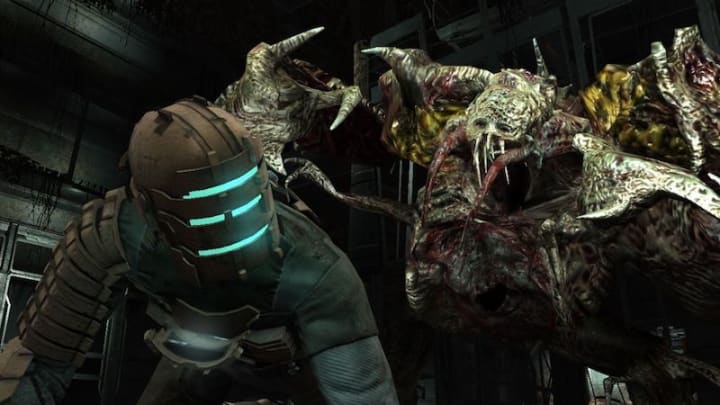
But while the startling jump scares may resonate more in an interactive medium, on the whole, there are deeper scares than that available in scary video games. A plethora of reasons exist for why horror games are scarier than movies, and that's the second level above the jump scare in the scary content hierarchy: gore.
Gory horror films are a staple of the medium. Debate rages on about whether it's scary or not, but, like most things, gore can be used to be either cool or horrifying.
Films like The Evil Dead, Friday the 13th, and Day of the Dead use gore go gross out the audience but usually, it ends up being more cool than scary. In contrast, films like Hellraiser, The Fly remake, and Cannibal Holocaust use gore as a means to truly horrify. It either violates the sanctity of flesh and the human form, exaggerates human fears of death or decay or, in some cases, shows us something so grotesque that we can't believe our eyes.
Horror games do this, too. While earlier games had trouble due to graphic limitations, modern horror has brought gore to new heights in gaming.
Games like Resident Evil, Outlast, and Doom all use gore to varying ends. While sometimes it is used to disgust, other times it is used just to overwhelm the player. The results vary.
The video game franchise Dead Space draws from horror films like The Thing and Event Horizon by presenting alien life body horror. Bodies are twisted around, broken, and just distorted into monstrous forms that are very hard to stop. Aside from the sense of horror one feels when a monster alien jumps out from the walls at you, these things are just gross.
Of note is the infamous "eye" scene from Dead Space 2. Our hero, Isaac Clarke, has to go into a machine in order to extract information from his brain through his eye. Should you perform this minigame correctly, you'll move onto the next round. Fail? The machine drives a giant needle through your eye socket, spraying blood all over the place!
Dread
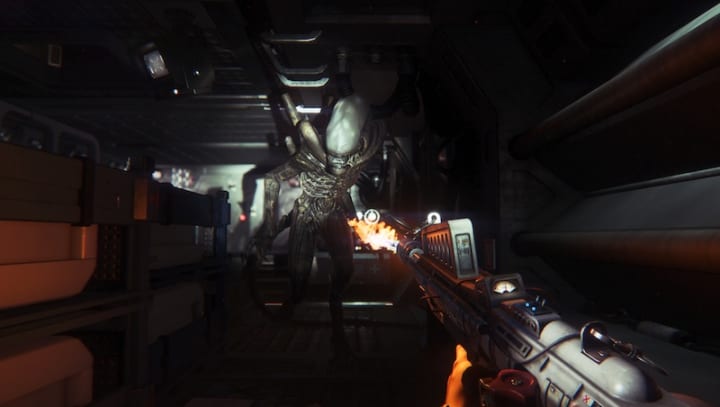
The third on our sliding scale of horror, dread, is the hardest to find in either video games or movies. While the idea of interactivity does add an extra level to dread (after all, the player now has to deal with being killed in-game), in both cases, a masterful video game designer or director can make dread incredibly potent.
Films like The Shining and Halloween are all about that sense of dread. That sense of lurking terror. It's waiting for that scary thing to happen – the silence, the shape lurking out of sight – that terrifies the viewer.
Scary horror games by their very nature always have an edge of dread. It compliments all the gore and jump scares that follow – the knowledge that, very soon, that scary thing will happen, and kill you.
But there are also horror games that derive its scary content from dread entirely.
Amnesia: The Dark Descent is a game where players have no weapons, no idea what is happening, and are dumped into a labyrinth of strange, unknown things. It's Lovecraftian horror at its finest, presenting players with a sense that, should they not escape fast enough, they will die. It puts all the power into the game's enemies and makes you fully aware how powerless you are against the forces around you.
But I would argue that the best exercise of dread in horror gaming is Alien: Isolation, a video game spin-off of the classic sci-fi horror movie, Alien. These two occupy the upper echelons of their horror mediums. Analyzing this, however, is a great execution into why horror games are scarier than movies, as, without taking anything away from Alien, it is clear that Alien: Isolation, is even scarier than the film it's based on.
Yes, Alien has its terrific chest burster scene and tons of atmosphere. But, in this game, you are actually with an adult xenomorph who is out to hunt you down. You see the alien in the room with you, can pick up on them near you. The uncomfortable quiet and still halls leave you fully aware of every little movement.
The immersion is what makes it scary, in this case. You are fully enveloped in this world of fear and terror. Because you can die in gaming, there are consequences for failure, and nothing is predetermined.
And when you fail – it isn't a jump scare. It's an ungodly dreadful feeling of horror as you watch the xenomorph chase you down and kill you in a grizzly fashion. It's all so quiet and sudden that it actually leaves you more shaken than if what you saw was just a jump scare.
Again, just like the original Alien film.
But the reason why this horror game is scarier than the movie is that you are completely immersed in the experience. While you may fear for Ripley's life, she is a separate character. In this, you're fearing for YOUR life (or, in this case, Ellen Ripley's daughter, Amanda).
Nightmarish Ideas
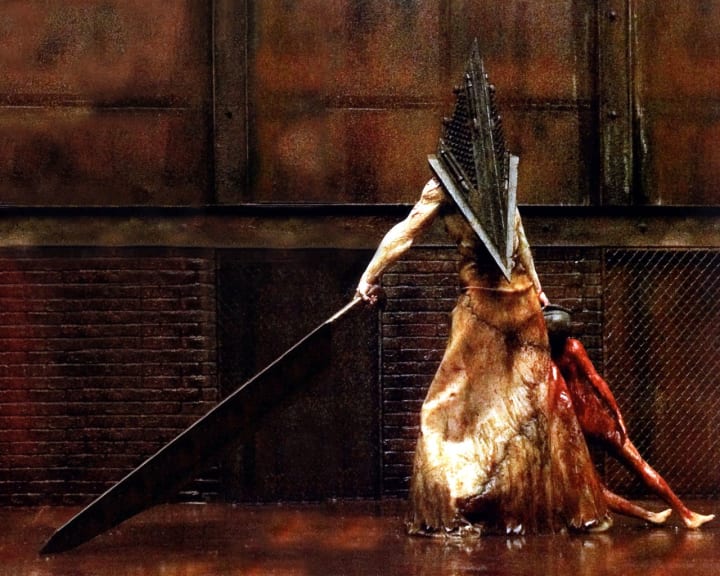
The final level of fear is the scary idea. This is what truly sticks out to almost all viewers. The sense of a truly nightmarish idea that shakes viewers even after the film ends.
Many viewers accustomed to jump scares might not understand why slower films like Rosemary's Baby or The Exorcist are so horrifying. Viewers may think what's scary about A Nightmare on Elm Street is Freddy Krueger and his killing spree. Hell, modern films like The Babadook or The Witch might go completely over this audience's heads.
What you see isn't what's scary, but rather the idea behind what you see.
Rosemary's Baby is a world where everyone else is out to get you. You can't trust anyone. The Exorcist shows us that evil can overtake even the most innocent, pure thing we can think of: a child. It's essentially a rape of purity that we are helpless to watch. A Nightmare on Elm Street robs us of our peace of mind in sleep. We are never safe.
These films are scary because they're smart.
Video games are often seen as superficially scary, in that there's something that jumps out at you or grosses you out, but that's it. Nothing deeper. For those who don't think horror games are scarier than movies, this is the point they often latch onto.
And this is true for a lot of games. Horror games do often avoid deeper ideas. There is no deep message to Resident Evil. Outlast is just a game in a scary asylum because asylums are scary. It has no deeper message about institutionalization. Five Nights at Freddy's presents a complicated plot without real complexity. Yes, there's a mystery about what's going on, but what's the point?
For many, this is where my argument fails. Horror films are just better at presenting compelling scary ideas.
For my counter-point, I present Silent Hill.
I've avoided talking about one of the founding fathers of survival horror for a reason: it is proof that games are more than capable of offering deeply disturbing experiences by utilizing everything in the game to frighten you.
Yes, the Silent Hill franchise can be gory. Yes, there are jump scares. Yes, there is a sense of dread when wandering through the empty corridors in the dark with only three bullets. But what sticks with so many viewers is that the monsters in the game are all used to represent the characters' inner demons.
And because games are a faster-paced medium, they can bypass the set-up stages so many films get caught up on in order to dive into the terrifying ideas.
In Silent Hill 2, we are confronted with Pyramid Head. One of the most iconic horror game characters ever. He's a guy with a huge pyramid for a head, and the body of a naked man, dragging behind him a massive blade. We first meet Pyramid Head when he's raping two other monsters we confronted prior in the game, both of whom are nothing but women's legs fused at the hip.
Pyramid Head represents James Sunderland's, the main character, suppressed (and violent) sexuality and misogyny. Ultimately, to defeat Pyramid Head – an unstoppable mass of power – James has to come to terms with his actions before the game.
And everything in Silent Hill – every location, every character, every enemy – represents humanity's inner turmoil and demons. It is an exploration of the dark side of human psychology.
And it incorporates every element of terror to relay it. And, unlike a movie, it lasts for as long as it takes for you to survive it all.
About the Creator
Anthony Gramuglia
Obsessive writer fueled by espresso and drive. Into speculative fiction, old books, and long walks. Follow me at twitter.com/AGramuglia


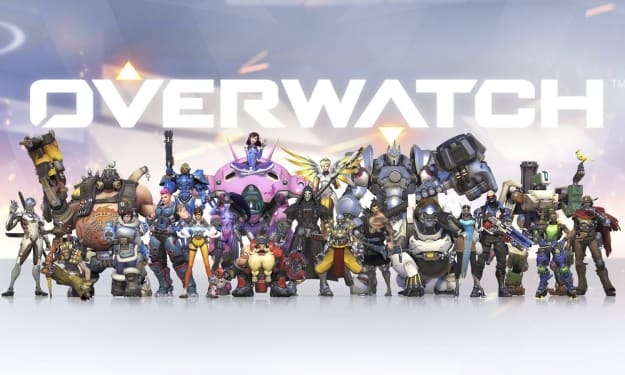



Comments
There are no comments for this story
Be the first to respond and start the conversation.